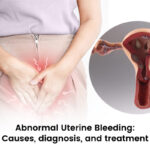Abortion with sepsis is a severe and life-threatening complication arising when an infection occurs following a pregnancy termination. Prompt diagnosis and treatment are essential to prevent adverse outcomes. This article provides a comprehensive overview of abortion-related sepsis, including its causes, symptoms, risk factors, diagnostic procedures, and treatment options.

What Is Sepsis in the Context of Abortion?
Sepsis is a systemic inflammatory response to an infection, potentially leading to organ dysfunction or failure. When associated with abortion, sepsis typically results from bacterial infections of the uterus or surrounding tissues, spreading to the bloodstream if untreated. This condition can develop after surgical, medical, or spontaneous abortions, emphasizing the importance of timely medical intervention.
Causes and Risk Factors of Abortion-Related Sepsis
Common Causes
The primary cause of sepsis following abortion is bacterial infection. Common pathogens include:
- Clostridium perfringens: Known for its rapid progression and association with gas gangrene.
- Escherichia coli (E. coli): Frequently involved in post-abortion infections.
- Group A Streptococcus (GAS): A rare but aggressive pathogen.
- Anaerobic bacteria: Found in the genital tract and capable of causing severe infections.
Risk Factors
Certain factors increase the likelihood of developing sepsis after abortion:
- Unsafe Abortion Practices: Lack of sterile conditions or improper techniques significantly raise infection risks.
- Incomplete Abortion: Retained products of conception provide a medium for bacterial growth.
- Poor Hygiene: Non-sterile instruments or inadequate post-procedure care contribute to infection risks.
- Preexisting Infections: Conditions like pelvic inflammatory disease (PID) increase susceptibility.
- Delay in Seeking Care: Delayed recognition or treatment of post-abortion complications can lead to sepsis.
Recognizing the Symptoms of Abortion-Related Sepsis
Early detection of sepsis is critical for effective management. Symptoms may include:
- Fever: A core body temperature above 38°C (100.4°F).
- Chills and Rigors: Sudden episodes of shivering and chills.
- Abdominal Pain: Persistent or worsening pelvic or lower abdominal pain.
- Vaginal Discharge: Foul-smelling or abnormal discharge, often indicative of infection.
- Tachycardia: Elevated heart rate, typically exceeding 90 beats per minute.
- Hypotension: Low blood pressure, which can progress to septic shock.
- Altered Mental Status: Confusion, restlessness, or lethargy in severe cases.
These symptoms necessitate immediate medical attention to prevent further complications.
Diagnosis of Sepsis After Abortion
Accurate diagnosis involves a combination of clinical evaluation and laboratory testing.
Clinical Assessment
- Medical History: Details about the abortion procedure, timing, and any complications.
- Physical Examination: Assessment of vital signs, abdominal tenderness, and signs of systemic infection.
Diagnostic Tests
- Blood Tests: Identifying elevated white blood cell counts, lactate levels, and markers of inflammation like C-reactive protein (CRP).
- Blood Cultures: Detecting bacteria in the bloodstream to guide antibiotic therapy.
- Pelvic Ultrasound: Identifying retained products of conception or uterine abnormalities.
- Microbiological Cultures: Vaginal or uterine swabs to identify the causative organism.
Treatment of Abortion-Related Sepsis
Management of sepsis involves a multi-pronged approach, combining infection control, supportive care, and surgical intervention if necessary.
Infection Control
- Empiric Antibiotic Therapy: Broad-spectrum antibiotics are administered immediately to target likely pathogens. Common regimens include combinations of:
- Clindamycin with gentamicin
- Ampicillin with sulbactam
- Pathogen-Specific Antibiotics: Adjustments are made based on culture results.
Supportive Care
- Intravenous Fluids: Correcting dehydration and maintaining blood pressure.
- Oxygen Therapy: Ensuring adequate oxygenation in cases of respiratory distress.
- Vasopressors: Medications like norepinephrine may be required to stabilize blood pressure in septic shock.
Surgical Intervention
- Evacuation of Uterine Contents: Removal of retained products of conception via suction curettage or dilation and evacuation (D&E).
- Hysterectomy: Reserved for cases where the infection cannot be controlled or when uterine necrosis is present.
Preventing Sepsis Following Abortion
Prevention strategies are essential for reducing the incidence of abortion-related sepsis.
Access to Safe Abortion Services
- Sterile Techniques: Ensuring the use of sterile instruments and environments during procedures.
- Trained Providers: Procedures conducted by qualified professionals reduce infection risks.
Post-Abortion Care
- Prompt Follow-Up: Ensuring complete uterine evacuation and monitoring for signs of infection.
- Patient Education: Providing clear instructions on recognizing warning signs and seeking immediate care.
Antibiotic Prophylaxis
Prophylactic antibiotics are recommended before surgical abortion procedures to minimize the risk of infection.
Complications of Untreated Sepsis
If not managed promptly, sepsis can lead to severe complications:
- Septic Shock: A life-threatening drop in blood pressure requiring intensive care.
- Organ Failure: Multi-organ dysfunction involving the kidneys, liver, lungs, or heart.
- Infertility: Severe uterine damage can lead to future fertility issues.
- Death: Sepsis remains a significant cause of maternal mortality in settings with limited access to healthcare.
Abortion-related sepsis is a preventable yet severe complication that requires immediate attention. Ensuring access to safe abortion practices, early detection of symptoms, and timely medical intervention are critical to minimizing risks and improving outcomes. By combining infection control, supportive care, and surgical measures, healthcare providers can effectively manage sepsis and prevent long-term complications.

